TIZ 5. Phantasmata
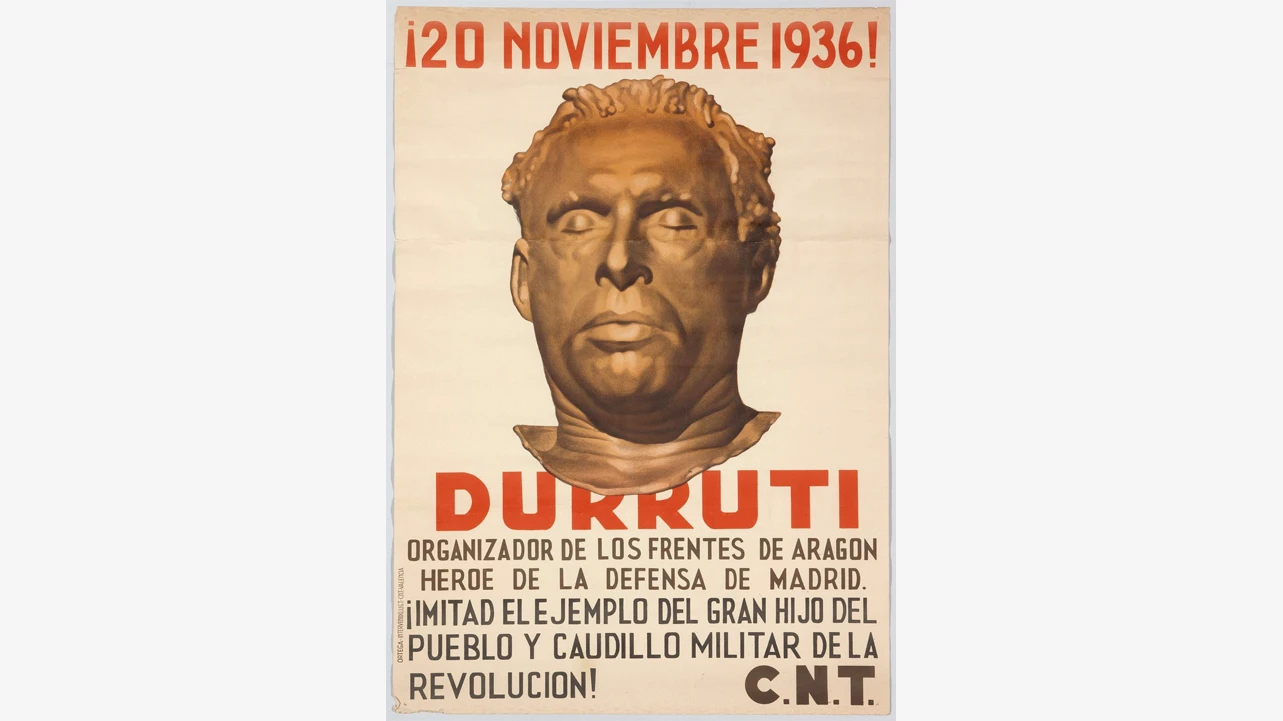
Held on 01 Sep 2022
No form comes about without its ghost. Like the shadow in relation to its body, the ghost is, from its etymology (phantasma), imagination made visible; an appearance made manifest; a fiction that allows that which exists to be thought of. Like the castle that inhabits the ruin or the peace that inhabits the army, all institutions can be thought of from the phantasmagorias that wander through them.
There is truth to the rumours of spirits in the corridors of the Museo and the rooms of the old hospital remaining today in its exhibition rooms, in the same manner that a work disintegrates in its phases. For instance, the other forms Guernica took on during its process of creation — the pictures that never were — still enchant it, while the very notion of an archive, as an artefact to document a collection, represents a ghost for the Museo. Yet how can performances be collected if by their very nature they leave no trace?
This TIZ reflects on ghostly relationships, the relationships of events with history, of citizens with politics, of inhabitants with the home or of the missing with those still waiting for them. In the month of the dead, we think about mourning and lamenting, memory and forgetting, and forms of presence and disappearance from the unique spectrality which the same idea of a museum imposes upon us.
-
Monday, 19, Tuesday, 20, and Wednesday, 21 September 2022 Meeting point: Nouvel Building, Library and Documentation Centre
Time has fallen asleep in the afternoon sunshine. Session 3
Mette Edvardsen
Registration (oral format)Time has fallen asleep in the afternoon sunshine is a phrase that appears in Ray Bradbury’s 1953 novel Fahrenheit 451, in which people memorise books in an attempt to save them from censorship and political persecution in a dystopian future. Therefore, books can only continue to be visible by not being visible, inhabiting other bodies as ghosts. In this project by Mette Edvardsen, people from different countries memorise books of their choice, and together they form a library collection of “living books” which, at stipulated times, are available to the public in the form of individual encounters from which to recite what has been learned to a visitor.
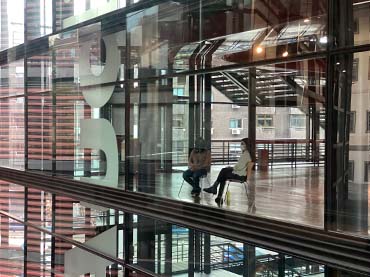
-
Wednesday, 21, Thursday, 22, and Friday, 23 September 2022
Collecting the Present
International Seminar
If the very nature of performance defies the possibility of leaving a trace, how can works of this type be collected? Or maybe they are destined to be a ghostly presence? This series of lectures and activities with artists, theorists, curators and researchers approaches how performative artistic practices are inserted inside a collection and its institutional framework. Therefore, the aim is to spark debate and collaboration around the theoretical, practical and ethical commitments underlying this act of collecting.
![Benvenuto Chavajay, Shoe Sole No. 39, 2022. Pyrography on leather submerged in the water of Lake Atitlán (Guatemala), which works as instructions for the performance Returning Souls [Popol Wuj]. Photo courtesy of the artist Benvenuto Chavajay, Shoe Sole No. 39, 2022. Pyrography on leather submerged in the water of Lake Atitlán (Guatemala), which works as instructions for the performance Returning Souls [Popol Wuj]. Photo courtesy of the artist](https://recursos.museoreinasofia.es/legacy_programs/benvenuto_snippet.jpg)
-
Thursday, 22 September 2022 Sabatini Building, Floor 1, Room 105
Free Unions. Returning Souls (Popol Vuh [Wuj]), a Performance by Benvenuto Chavajay
Activities on the Collection
RegistrationFor this edition of Free Unions, the Museo invites Benvenuto Chavajay, a pre-eminent Guatemalan performer with works in the Collection, such as Hombre de maíz (Corn Man, 2019), to perform. Chavajay’s work, self-defined as chunchero, in reference to objects thrown on the ground, is characterised by its strong content of social and political critique, and with a production that includes, along with performance, the masterly use and/or reconfiguration of day-to-day elements from the community to dignify objects. In the artist’s own words: “Everything has a soul; even a plastic bag has meaning. And so there is nothing more to do but recognise, identify, multiply and dignify”.
![Benvenuto Chavajay in Chichicastenango, Guatemala, 2022. The marble plaque reads: “Here in the convent of Chichicastenango […] Popol Vuh (Wuj) was found and translated Benvenuto Chavajay in Chichicastenango, Guatemala, 2022. The marble plaque reads: “Here in the convent of Chichicastenango […] Popol Vuh (Wuj) was found and translated](https://recursos.museoreinasofia.es/legacy_programs/benvenuto_perf_snippet.jpg)
-
Thursday, 13 and Friday, 14 October 2022
Alexandra T. Vázquez
To See What We Hear. To Hear What We See
Alexandra T. Vázquez, an associate professor from NYU’s Institute of Performing Arts at the Tisch School of the Arts, gives the seminar To See What We Hear. On the one hand, she presents certain ways of incorporating the intuitive revelations that underly thought and writing into research practice and, on the other, explores the sound archive and interview as devices which are able to lead research in fascinating directions. Vázquez will also give a lecture entitled To Hear What We See, where she demonstrates how music is able to create visionary relationships towards and between objects and different forms of expression. Both activities are organised inside the framework of the Juan Antonio Ramírez, devoted to the historiography of art
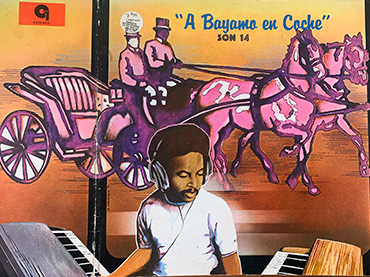
-
Thursday, 13, and Friday, 14 October 2022
ESTUDIO IV
Second Skin. Subcutaneous
The Museo presents the fourth edition of ESTUDIO, an annual programme which assembles presentations in different formats, the results of research developed by a series of artists and researchers whose practice is linked, directly or dialogically, to the sphere of choreography and performance. This latest instalment is made up of three performances: Doble muda, by Alejandra Pombo Su, Duet, by Kike García and Fran MM Cabeza de Vaca, and Javiera de la Fuente’s Envioletá / un estudio. It concludes with ESTUDIO IV in Conversation, an encounter organised in the form of dialogues between participating artists and speakers who collaborate in their processes
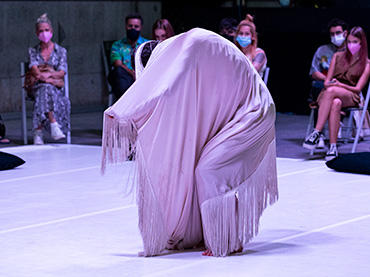
-
Monday, 17 October 2022 Sabatini Building, Auditorium and online platform
Architecture in the Age of Pandemics. From Tuberculosis to COVID-19
A Lecture by Beatriz Colomina
TicketsThe work of Beatriz Colomina centres on the crossroads between architecture, the media, advertising, sexuality, art and technology through a theoretical and historical gaze. Colomina is a professor at Princeton University’s School of Architecture, where she is also the founder and director of the Media and Modernity interdisciplinary programme. Some of her publications, for instance Domesticity at War (MIT Press, 2007) and Are We Human? Notes on an Archeology of Design (Lars Müller Publishers, 2016), have been translated into more than twenty-five languages. Inside the Museo Reina Sofía, still inhabited by the ghosts of its previous conception as a hospital, one of her most recent books, X-Ray Architecture (Lars Müller Publishers, 2019), resonates in its exploration of how medical discourse and its technology have influenced the formation and representation of twentieth-century architecture.
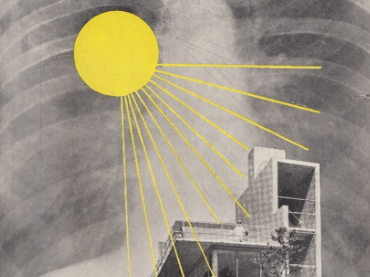
-
Friday, 28, and Saturday, 29 October 2022
Second International Feminist Encounter on the Witch-hunt
Colonialism, Extractivism and Violence Against Women
The murders of women accused of being witches, and ordered by civil and ecclesiastical powers from the fifteenth to the seventeenth centuries, live long in the collective memory as a chapter that must be revised. They are at the root of processes of women’s dispossession and defamation which today are still replicated in other global coordinates. This is the argument set forth by feminist historian and activist Silvia Federici in her seminal book Caliban and the Witch: Women, the Body and Primitive Accumulation (Autonomedia, 2004), where she expounds the foundational nature of this witch-hunt with respect to capitalist modernity and both its break-up of communal relations and the disciplining of women in order for them to accept their new role: as invisible workers in a production system and the carers of labour. Federici herself participates in the encounter, along with other activists and researchers.
-
Friday, 11 November 2022 Nouvel Building, Auditorium 200
Collective Mourning and Planetary Mourning. MONUMENT 0.6: Heterochrony
Eszter Salamon
TicketsThe Museo organises Collective Mourning and Planetary Mourning, with a live arts programme which participates in the 40th Autumn Festival of Madrid. The first part features the performance of MONUMENT 0.6: Heterochrony, a stage piece by Hungarian choreographer Eszter Salamon, who creates an imaginary scene between past and present. The work also includes echoes of music archives from Sicily with choreographic impressions inspired by the mummification rituals of the Capuchin Catacombs of Palermo, presenting a continuum between life and death, a phantasmagorical co-existence, while inventing its own utopian body: a dancing, acoustic body. The performance is followed by a conversation between Eszter Salamon, Isabel de Naverán, Germán Labrador and Alberto Conejero.

-
Saturday, 12, and Sunday, 13 November 2022 Sabatini Building, Floor 1, Room 102
Collective Mourning and Planetary Mourning. Unending love, or love dies, on repeat like it's endless
Alex Baczyński-Jenkins
TicketsThe second part of the Collective Mourning and Planetary Mourning programme presents the performance Unending love or love dies, on repeat like it's endless, a choreography by Alex Baczyński-Jenkins which explores relationships between desire, dance, fragmentation, love (understood as communality), mourning and time. Through the gesture, sensuality, relationality and touch, Baczyński-Jenkins’s practice unfurls structures and politics of desire. Relationality is present in the dialogic forms of developing and performing the piece, and in the materials and poetics it invokes. This includes the study of the relationships between feeling and sociability, embodied expression and alienation, the textures of daily experiences and latent queer utopian legacies.

-
Monday, 14 November 2022 Nouvel Building, Auditorium 200 and online platform
After It’s All Said
A Lecture by Denise Ferreira da Silva
Online platformDenise Ferreira da Silva is a professor at and director of the Institute for Gender, Race, Sexuality and Social Justice from the University of British Columbia in Canada, and one of the most eminent anti-racist intellectuals in the global academic and artistic sphere. Her book Toward a Global Idea of Race (2007) considers how the notion of racial difference governs the global configuration of power in modernity. In recent times, Ferreira da Silva has published different benchmark manuals for racial and post-colonial theory and history, such as Routredge Handbook of Law, Race, and the Postcolonial (2022) and Routredge Handbook of Indigenous Peoples & the Law (2022). As an artist, she has worked with Arjuna Neuman on the films Serpent Rain (2016) and 4 Waters-Deep Implicancy (2018), and in relational artistic practices such as Poethical Readings and Sensing Salon, in collaboration with Valentina Desideri.
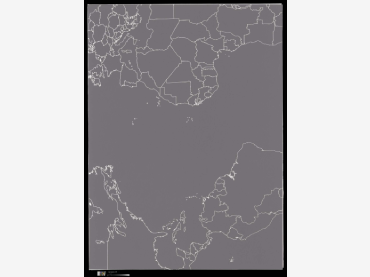
-
Episode 1. Avant-garde Territories: City, Architecture and Magazines Sabatini Building, Floor 2
Holy Bohemia. Madrid, Paris, Barcelona. Rooms 201.01, 201.02 and 201.03 José Ortiz Echagüe. Room 201.04
The pale, drugged and syphilitic bodies of the bohemian night inhabit the march of the modern city from the shadows. The painting of José Solana crosses through daily life in 1920s and 1930s Spain in a gloomy dialectic represented on spectral faces sitting in cafés, dining areas and at shows. In his work, death traces the Catholic rituals that invoke it and he depicts how excluded layers of society lived. His canvases, like the photographs of José Ortiz Echagüe, open out towards the Tenebrist perception of Spanish reality, uncoiling, on the wounds of modernity, the ghosts of a sinister and irredeemable nation: España Negra (Black Spain).
-
Episodio 1. Territorios de vanguardia: ciudad, arquitectura y revistas Edificio Sabatini, Planta 2
Guernica. Room 205.10
This room shows, alongside Guernica, photographs of the different stages of the work’s execution taken and retouched by Dora Maar. The images grant us a view of how Picasso progressively amended the postures of the personages and removed elements to offer greater compositional clarity. In the final stages, the drawings were filled in, with the initial narrative sense lost and the symbolic weight shared between the protagonists. These photographs, and other original sketches by the artist, show other forms the painting had and could have had and which inhabit it today as a ghostly presence.
-
Episode 3. Campo Cerrado Sabatini Building, Floor 4
Bread and the Cross. Room 400.02
With the defeat of the Axis in 1945, Francoism closed in upon itself, and from that moment Catholic imagery took over the regime’s cultural expression. National Catholicism as an aesthetic placed the question of death at the centre via well-known tropes — Descent, Ascension, the Holy Shroud, the corpse, the wound, the ruin — invoking the idea of Spain resurrecting in search of its origins. The fantasies of the regime were summoned in the works of José Gutiérrez Solana and Aurelio Suárez, where a legacy of the pre-war avant-garde was reflected from its connection to popular culture through paintings inhabiting the minutiae of daily life.
-
7 October 2022 - 9 April 2023 Retiro Park, Palacio de Cristal
Pauline Boudry / Renate Lorenz
Glass Is My Skin
Pauline Boudry (Switzerland, 1972) and Renate Lorenz (Germany, 1963) have worked together in Berlin since 2007, focusing their concerns on a revision of cultural inheritance, conventions around the spectator, gender discourse and, above all, queer theory. Their artistic production questions the normativity of historical narratives, often revisiting materials from a bygone era to recover marginalised or ignored readings. In this project, the Palacio de Cristal becomes the perfect context to dissolve the transparency inherent in the building, which seeks opaqueness before its own historical legacy. The exploration of ghostly visuality also entails a reflection around the continuity of these footprints of violence in the contemporary world.
-
Every Saturday, October - November 2022
Burning Torch! Spirits, Ghosts and Other Magical Creatures
Burning Torch! joins this TIZ encounter to light up the secret corners of the Museo, inhabited by magical creatures such as spirits, angels, ghosts and imaginary animals. Across these two months, and in dialogue with the Royal Theatre, the Museo explores the traces left by certain invisible presences in the building, playing with the disappearance of impossible reflections and invoking magic in secluded underground spaces.
-
Podcast
Leaving the Table Holding the Tablecloth
The Ghost of Mark Fisher
Listen to the capsuleTo exorcise the self-fulfilling prophecy which forces us to have little hope of a better future, the Argentinian publisher Caja Negra invites a group of historians, theorists and artists to conduct a series of four podcasts on the critical and cultural legacy of Mark Fisher. His death in 2017 further fuelled the caustic view of how neoliberalism manufactures objective and subjective conditions of a reality tailor-made from the cycle of exploitation, accumulation and profit. Moreover, the remains of his critical theory abound and enjoy new lives beyond death.
Más actividades

Difficulty. Forms and Political Effects of Deviation in Writing and Contemporary Art
23 February – 14 December 2026 – Check programme
Difficulty. Forms and Political Effects of Deviation in Writing and Contemporary Art is a study group aligned towards thinking about how certain contemporary artistic and cultural practices resist the referentiality that dominates the logics of production and the consumption of present-day art. At the centre of this proposal are the concepts of difficulty and deviation, under which it brings together any procedure capable of preventing artistic forms from being absorbed by a meaning that appears previous to and independent from its expression. By ensuring the perceptibility of their languages, difficulty invites us to think of meaning as the effect of a signifying tension; that is, as a productive and creative activity which, from the materiality of art objects, frees aesthetic experience from the representational mandate and those who participate in it from the passiveness associated with tasks of mimesis and decoding.
The economy of the referential norm translates the social logic of capitalism, where insidious forms of capturing subjectivity and meaning operate. In the early 1980s, and adopting a Marxist framework, poet Ron Silliman highlighted how this logic entailed separating language from any mark, gesture, script, form or syntax that might link it to the conditions of its production, rendering it fetichised (as if without a subject) and alienating its users in a use for which they are not responsible. This double dispossession encodes the political strategy of referential objectivity: with no subject and no trace of its own consistency, language is merely an object, that reality in which it disappears.
The political uses of referentiality, more sophisticated today than ever before, sustain the neoliberal-extractivist phase of capitalism that crosses through present-day societies politically, economically and aesthetically. Against them, fugitive artistic practices emerge which, drawing from Black and Queer studies and other subaltern critical positions, reject the objective limits of what exists, invent forms to name what lies outside what has already been named, and return to subjects the capacity to participate in processes of emission and interpretation.
Read from the standpoint of artistic work, the objective capture of referentiality may be called transparency. Viewed from a social contract that reproduces inequality in fixed identity positions, transparent in this objectivity are, precisely, the discourses that maintain the status quo of domination. Opposite the inferno of these discourses, this group aims to collectively explore, through deviant or fugitive works, the paradise of language that Monique Wittig encountered in the estranged practices of literature. For the political potency of difficulty — that is, its contribution to the utopia of a free language among equals — depends on making visible, first, its own deviations; from there, the norm that those deviations transgress; and finally, the narrowness of a norm which in no way exhausts the possibilities ofsaying, signifying, referring and producing a world.
From this denouncement of referential alienation, fetishisation and capture, Difficulty. Forms and Political Effects of Deviation in Writing and Contemporary Art turns its attention to the strategies of resistance deployed by contemporary artists and poets. Its interest is directed towards proposals as evidently difficult or evasive as those of Gertrude Stein, Lyn Hejinian, Theresa Hak Kyung Cha, Kameelah Janan Rasheed, Kathy Acker, María Salgado and Ricardo Carreira, and as seemingly simple as those of Fernanda Laguna, Felix Gonzalez Torres and Cecilia Vicuña, among other examples that can be added according to the desires and dynamics of the group.
The ten study group sessions, held between February and December, combine theoretical seminars, work with artworks from the Museo Reina Sofía’s Collections and exhibitions, reading workshops and public programs. All these formats serve as spaces of encounter to think commonly about certain problems of poetics — that is, certain political questions — of contemporary writing and art.
Difficulty. Forms and Political Effects of Deviation in Writing and Contemporary Art inaugurates the research line Goodbye, Representation, through which the Museo Reina Sofía’s Studies Directorship seeks to explore the emergence of contemporary artistic and cultural practices which move away from representation as a dominant aesthetic-political strategy and redirect their attention toward artistic languages that question the tendency to point, name and fix, advocating instead for fugitive aesthetics. Over its three-year duration, this research line materializes in study groups, seminars, screenings and other forms of public programming.

CLINIC 2628. A Community of Writing and Research in the Arts
February – October 2026
Clinic 2628 is a project which supports and brings together writings which stem from the intention to offer a space and sustainable time for research work in art and culture. Framed within an academic context which is increasingly less receptive to the forms in which thinking happens and is expressed, the aim is to rescue the academic from its neoliberal trappings and thus recover the alliance between precision and intuition, work and desire. A further goal is to return writing to a commons which makes this possible through the monitoring of processes and the collectivisation of ideas, stances, references and strategies.
The endeavour, rooted in a collaboration between the Museo Reina Sofía’s Studies Directorship and the Artea research group, via the i+D Experimenta project, is shaped by three annual editions conceived as spaces of experimentation, discussion and a demonstration of writings critical of what is put forward by today’s academia.
What forces, forms and processes are at play when writing about art and aesthetics? In academia, in museums and in other cultural institutions, the practice of writing is traversed by productivist logics which jeopardise rhythms of research and experimentation. The imposition of both scientism inherent in the structure of “the paper” and the quantifying of results which demand a criterion of quality and visibility sterilise and smoothen, from the outset, the coarseness that is particular to writing understood from the concrete part of language: phonic, graphic, syntactic and grammatical resistance connecting the language user to the community the language unites and activates. They also sterilise the roughness enmeshed in the same desire to write, the intuitive, clear and confusing pathways that once again connect the writer to those reading and writing, participating in a common good that is at once discovered and produced.
The progressive commercialisation of knowledge propelled by cognitive capitalism moves further away from the research and production of knowledge in artworks and artistic languages and practices. The work of curators and archive, criticism, performances and essays formerly saw a horizon of formal and emotional possibilities, of imagination that was much broader when not developed in circumstances of competition, indexing and impact. Today, would it be possible to regain, critically not nostalgically, these ways; namely, recovering by forms, and by written forms, the proximity between art thinking and its objects? How to write in another way, to another rhythm, with no more demands than those with which an artwork moves towards different ways of seeing, reading and being in the world?
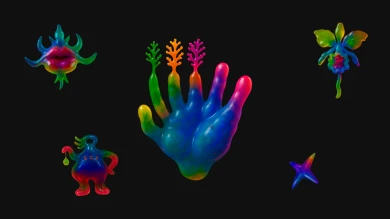
Cultural Work
Thursday, 12 February 2026 – 5:30pm
This series is organised by equipoMotor, a group of teenagers, young people and older people who have participated in the Museo Reina Sofía’s previous community education projects, and is structured around four themed blocks that pivot on the monstrous.
Session number two looks to approach film as a place from which cultural work is made visible and processes of production engage in dialogue with artistic creation. From this premise, the session focuses on exploring how audiovisual content is produced, assembled and distributed, from the hands that handle the images to the bodies that participate in its circulation. The aim is to reflect on the invisible effort, precarity and forms of collaboration that uphold cultural life, that transform the filmic experience into an act that recognises and cares for common work.
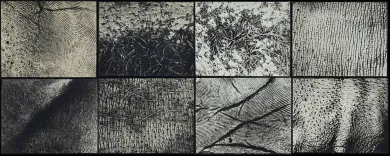
The (legal) person and the legal form. Chapter II
8, 12, 15 January, 2026 – 16:00 to 19:00
As part of the Studies Constellation, the Study Directoship’s annual fellowship, art historian and theorist Sven Lütticken leads the seminar The (Legal) Person and the Legal Form: Theoretical, Artistic, and Activist Commitments to foster dialogue and deepen the hypotheses and questions driving his research project.
This project, titled Unacting Personhood, Deforming Legal Abstraction, explores the dominance of real abstractions—such as exchange value and legal form—over our processes of subjectivation, and asks how artistic practices can open up alternative ways of representing or performing the subject and their legal condition in the contemporary world.
The seminar consists of eight sessions, divided into three chapters throughout the academic year. While conceived as non-public spaces for discussion and collective work, these sessions complement, nourish, and amplify the public program of the Studies Constellation.
In this second chapter of the seminar, the inquiry into the aesthetics and politics of legal form continues with three sessions that pick up the discussions held in Chapter I but propose new lines of flight. The first session focuses on international law via the writings of the British author China Miéville, which allows us to reconsider the notion of the legal form –following Evgeny Pashukanis— and, through it, a variety of (people’s) tribunals. While the crucial concept of the legal person –as the right-holder central to the form of law— was debated in Chapter I, the second session focuses on attempts to extend personhood not (just) to corporations, but rather to nonhuman animals or ecosystems. Finally, the third session poses the question: how can groups and networks use officially recognized organizational forms (such as the foundation or the cooperative) and/or use a collective persona (without necessarily a legal “infrastructure” to match) to act and represent themselves?

Oliver Laxe. HU/هُوَ. Dance as if no one were watching you
Tuesday, 16 December 2025 – 7pm
As a preamble to the opening of the exhibition HU/هُوَ. Dance as if no one were watching you, film-maker Oliver Laxe (Paris, 1982) engages in conversation with the show’s curators, Julia Morandeira and Chema González, touching on the working processes and visual references that articulate this site-specific project for the Museo Reina Sofía. The installation unveils a new programme in Space 1, devoted from this point on to projects by artists and film-makers who conduct investigations into the moving image, sound and other mediums in their exhibition forms.
Oliver Laxe’s film-making is situated in a resilient, cross-border territory, where the material and the political live side by side. In HU/هُوَ. Dance as if no one were watching you, this drift is sculpted into a search for the transcendency that arises between dancing bodies, sacred architectures and landscapes subjected to elemental and cosmological forces. As a result, this conversation seeks to explore the relationship the piece bears to the imagery of ancient monotheisms, the resonance of Persian Sufi literature and the role of abstraction as a resistance to literal meaning, as well as looking to analyse the possibilities of the image and the role of music — made here in collaboration with musician David Letellier, who also works under the pseudonym Kangding Ray — in this project.
These inaugural conversations, part of the main working strands of the Museo’s Public Programmes Area, aim to explore in greater depth the exhibition narratives of the shows organised by the Museo from the perspective of artists, curators and specialists.
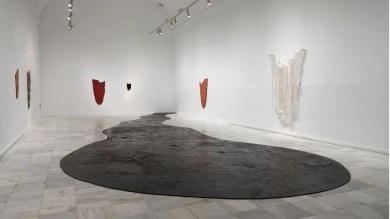
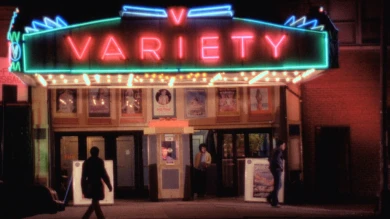
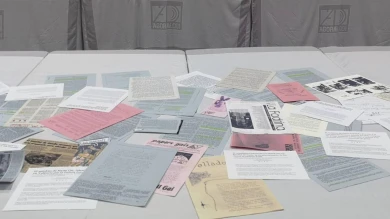
![Miguel Brieva, ilustración de la novela infantil Manuela y los Cakirukos (Reservoir Books, 2022) [izquierda] y Cibeles no conduzcas, 2023 [derecha]. Cortesía del artista](https://recursos.museoreinasofia.es/styles/small_landscape/public/Actividades/ecologias_del_deseo_utopico.jpg.webp)
![Ángel Alonso, Charbon [Carbón], 1964. Museo Reina Sofía](https://recursos.museoreinasofia.es/styles/small_landscape/public/Actividades/perspectivas_ecoambientales.jpg.webp)